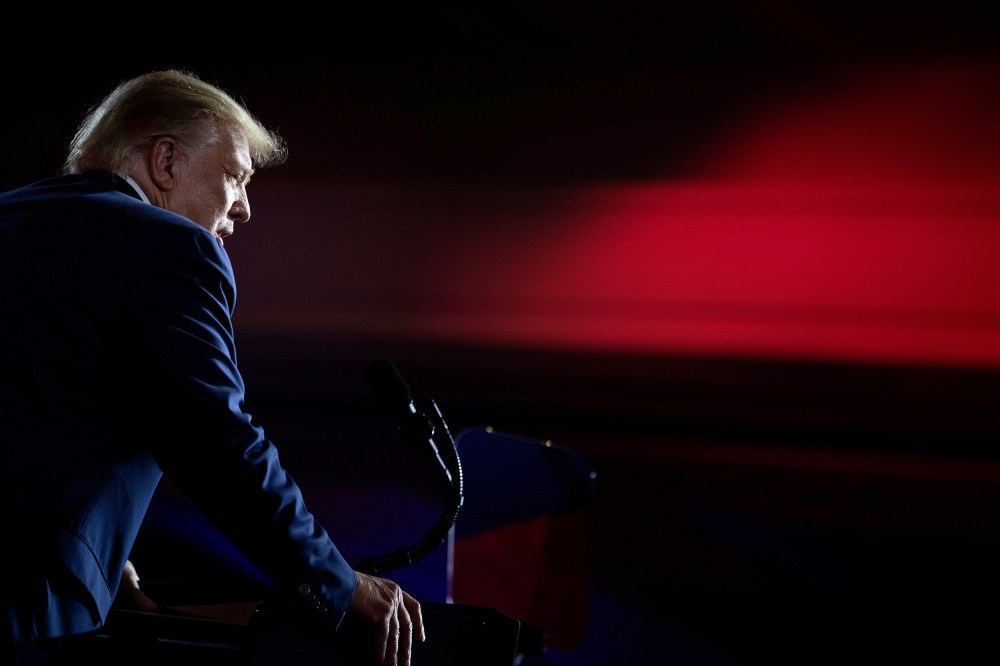One thing we’ve learned from Donald Trump’s false assertion this month that he would be arrested last week is that he still has the ability, even as a former president, to hijack the news cycle and shape it around his chosen narrative. It’s a pattern we’ve seen play out several times before with Trump and one we should prepare for in the coming days as we wait to see whether Trump will be indicted by the Manhattan district attorney’s office.
When Trump knows there is an information vacuum, he gets his story out first, whether it is true or not.
As someone who studies and teaches about information warfare, I have analyzed the many ways Trump exploits journalistic and institutional norms to shape narratives in his favor. Trump is a master of exploiting what I refer to as information asymmetry — the space in which events are anticipated but can’t yet be officially confirmed, such as what we’re experiencing in the current moment.
And that’s when he strikes. When Trump knows there is an information vacuum, he gets his story out first, whether it’s true or not, giving him “first mover advantage.” In particular, we should keep in mind that the time between when the DA’s office negotiates a surrender with Trump’s lawyers and when charges are unsealed — which might take a couple of days — is when Trump would have the most latitude to shape the perceptions and reactions of his supporters.
Because once his version is out there, reining it in or correcting it becomes very difficult.
We saw how this can play out in Trump’s favor in the Russia investigation. At the conclusion of his investigation, special counsel Robert Mueller prepared a lengthy report, outlining both numerous contacts between the Trump campaign and Russia and 10 potential counts of obstruction of justice. The report, however, was confidential and submitted to then-Attorney General William Barr, who had the power to release it; Mueller didn’t have the freedom to speak publicly. Barr held the report and instead released a “summary” falsely stating that it found no evidence of “collusion” (that word was deliberately avoided by the special counsel, who found no evidence of criminal conspiracy, which is a higher bar) and incorrectly claimed that Mueller found that Trump’s actions didn’t amount to obstruction of justice.
By the time the report was released three weeks later, news coverage and Trump’s own tweets claiming “total EXONERATION!” had already taken hold in the public’s mind. (An internal memo which a judge ordered to be released this past year reveals that attorneys working under Barr feared that if people read Mueller’s report first, they may believe that criminal charges were warranted.) Trump wasn’t charged with obstruction.

Trump repeated this play after the 2020 election. Knowing that because of the high volume of mail-in ballots because of Covid and that because some states, like Pennsylvania, didn’t allow votes to be counted before Election Day, Trump understood it could take days for a winner to be declared. The day before the election, he telegraphed his strategy, saying he would declare victory on election night if he was “ahead.” Indeed, on Nov. 4, the day after the election and three days before Joe Biden was officially called as the winner, Trump declared victory.
In fact, testimony from the House Jan. 6 committee revealed that Trump planned as far back as July to say he had won the election no matter what. The committee aired a video of Trump’s adviser Steve Bannon stating: “What Trump is going to do is declare victory … but that doesn’t mean he is the winner. He’s just going to say he is the winner.” Trump’s advance narrative helped set the stage for his claim that the election was rigged and for the events leading to the Jan. 6. insurrection.











